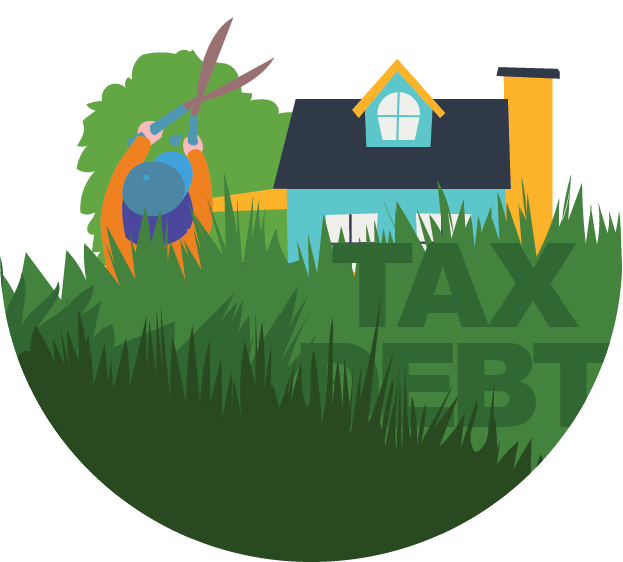How to Request IRS Tax Relief: Four Easy Steps
December, 15 2021 by Karen Reed, EA
If you have a large tax bill and are not sure how to handle it, you are not alone. Many people find themselves in similar circumstances, and it can happen for many reasons. Tax filing errors, unexpected events, and business downturns are just a few of the situations that can lead to tax debt—and once you’re in it, figuring out your options for getting out of tax debt can be stressful, frustrating, and even scary. Thankfully, there’s a proven approach you can easily follow to ensure the best possible resolution.
Step #1: Get a Handle on Your Tax Debt Situation
 A great first step in dealing with tax debt is to perform an overall assessment of your situation. If the collections communications you received from the IRS are not perfectly clear, which is often the case, you may need to conduct some initial research to gain a better understanding of the letter and what you are required to do to respond to it. Your goal at this stage will be to determine where you are in the collections process and explore the various options that are available to you.
A great first step in dealing with tax debt is to perform an overall assessment of your situation. If the collections communications you received from the IRS are not perfectly clear, which is often the case, you may need to conduct some initial research to gain a better understanding of the letter and what you are required to do to respond to it. Your goal at this stage will be to determine where you are in the collections process and explore the various options that are available to you.
Many tax firms offer a free consultation to enable you to gain a better understanding of your situation. Having a conversation with a qualified tax professional at TaxAudit will allow you to share information about your communications with the IRS, details of the circumstances that resulted in your tax balance, and the current state of your financial situation. You will be able to ask questions about where you stand, your available options, and the pros and cons of each. When selecting a firm to work with, make sure the person you consult with is a qualified tax professional and not just a salesperson.
Step #2: Dive Deeper and Develop an Action Plan
 If at this point you are still trying to handle your tax debt situation on your own—or if you’ve taken advantage of a free consultation with a tax resolution specialist and decided to manage it on your own from here—your next step will be to take a deeper dive into your available options with the goal of developing an action plan. Depending on your circumstances and the communications you’ve received, you may want to look into setting up an installment agreement or making an offer in compromise to settle your debt for less than what you owe.
If at this point you are still trying to handle your tax debt situation on your own—or if you’ve taken advantage of a free consultation with a tax resolution specialist and decided to manage it on your own from here—your next step will be to take a deeper dive into your available options with the goal of developing an action plan. Depending on your circumstances and the communications you’ve received, you may want to look into setting up an installment agreement or making an offer in compromise to settle your debt for less than what you owe.
If you’ve had a conversation with a tax resolution specialist from TaxAudit, you will have a good idea of the available options for resolving your tax debt and you will know if you will benefit from additional assistance. If, after your initial discussion, you believe there is value in having a tax resolution specialist take a closer look at your case, you may decide to continue working with them to help you gain a deeper understanding of your potential options for settling your tax debt.
When you move forward with a comprehensive assessment from one of TaxAudit’s tax resolution specialists, you will pay a flat fee to initiate your case. This will give you access to the company’s secure online Message Access Portal (MAP), which you can utilize via your smartphone or computer. Through this portal, you will be able to upload documents easily and securely as well as communicate with your tax professional. Once your documents have been received, your tax resolution specialist will review and analyze them and schedule discussions to clarify your position if necessary. They will then will develop a plan tailored to your specific situation and provide you with a quote for the services they recommend. If you decide to move forward with their recommendation, your initial fee will be credited toward your representation charges.
Step #3: Execute Your Plan
 Once you have a tax debt resolution plan in place, your next step will be to implement it. Depending on your situation, this may involve pursuing an audit reconsideration, negotiating with the IRS to set up an affordable payment plan, submitting an offer to pay less than the amount you owe, getting liens released, stopping wage garnishments, or a number of other approaches. If you have chosen to work with TaxAudit, your tax resolution specialist will vigorously represent you in all negotiations and processes they execute on your behalf, ensuring that all deadlines are met along the way. No matter how many twists and turns your tax professional encounters throughout the representation period, your agreed upon flat fee will cover everything. You will be charged no additional costs or surprise fees.
Once you have a tax debt resolution plan in place, your next step will be to implement it. Depending on your situation, this may involve pursuing an audit reconsideration, negotiating with the IRS to set up an affordable payment plan, submitting an offer to pay less than the amount you owe, getting liens released, stopping wage garnishments, or a number of other approaches. If you have chosen to work with TaxAudit, your tax resolution specialist will vigorously represent you in all negotiations and processes they execute on your behalf, ensuring that all deadlines are met along the way. No matter how many twists and turns your tax professional encounters throughout the representation period, your agreed upon flat fee will cover everything. You will be charged no additional costs or surprise fees.
Step #4: Final Tax Debt Resolution
 Once the implementation of your plan is completed, your last step will be the final settlement and resolution of your tax debt. Whether the final result is full tax debt forgiveness due to economic hardship or a reduced bill with a payment plan that you are comfortable with or something else, it will be a relief to have your situation resolved. If you are making payments, make sure you are meticulous about paying them on time and staying up to date with your tax filings to avoid ending up with a new tax debt problem in the future.
Once the implementation of your plan is completed, your last step will be the final settlement and resolution of your tax debt. Whether the final result is full tax debt forgiveness due to economic hardship or a reduced bill with a payment plan that you are comfortable with or something else, it will be a relief to have your situation resolved. If you are making payments, make sure you are meticulous about paying them on time and staying up to date with your tax filings to avoid ending up with a new tax debt problem in the future.
Handling your tax debt doesn’t have to be overwhelming. This proven, four-step approach will help you find the best possible resolution. First, take the time to figure out where you are in the process and gain an overall understanding of your situation and options. Next, take a deeper dive into your various opportunities and choose the one that is most advantageous for you. Then develop and implement your plan to achieve the final resolution of your tax debt.
Whether you work with a professional or take a do-it-yourself approach to handling your tax debt, it’s important to respond in a timely manner to any IRS letter or notice you receive. Doing so will ensure that penalties and interest are minimized and reduce the chances that the IRS will take more drastic measures against you. Always keep in mind that the IRS will not hesitate to use liens, levies, and wage garnishments to collect taxes from you if you fail to communicate with them about your tax bill. Taking prompt action to work with the IRS will maximize your chances of successfully clearing up your tax debt and avoiding these worst-case scenarios.
When you’re struggling with tax debt, seeking the help of a qualified tax professional is often the best approach toward resolving it. This is especially true when the amount you owe is high and your financial circumstances are less than ideal. Whatever your situation, a tax resolution specialist from TaxAudit can guide you in determining your best next steps.





